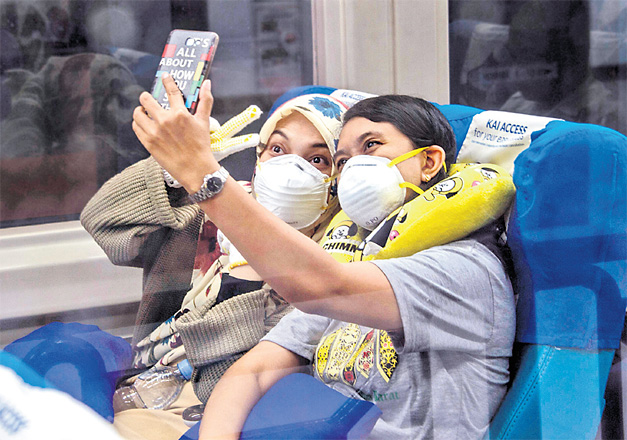Telangana
makes a departure on Lockdown Strategy:
There are
no two opinions on saving the humans should be of utmost importance when
compared to saving the economy, although the economy lives longer than the
human being. Therefore, strategically, saving the economy and saving the human
life should run parallel as far as possible.
In the case
of COVID-19, governments initially had no choice but to save lives by locking
down to strictly enforcing people staying at home setting aside the economy’s
interests very rightly. As things unfolded, there is broad realization that rescuing
the economy from the recession and moving to V curve should also not brook any
delay. In fact, compared to several States, Telangana has singular advantage
moving on consistently high growth trajectory till April 2019.
The breather
given by PM Modi on lockdown relaxation while extending the final date to May
3, 2020 allowed relaxations to keep several working populations in a new normal
– barring the barbers who have the largest potential to spread the Covid. Welders,
mechanics, electricians and even construction workers were all allowed to go
back to work on the strict compliance of wearing the mask at work and
maintaining social distance apart from frequent washing of hands with soap.
Those who
open the workshops were asked to strictly follow the full sanitization of the
area frequently and keeping the rest of the work-space tidy. It is expected
that the discipline of 25-day lockdown will hold them in good stead. Telangana
State differed on the agenda.
The State
has a distinct place in the economic space in the country. Telangana's
Gross State Domestic Product (GSDP) expanded at a Compound Annual Growth Rate
(CAGR) of 13.40 per cent (in Rupee terms) to Rs 8.67 trillion (US$ 126.81
billion) between 2011-12 and 2018-19. At a CAGR of 16.00 per cent (in Rupee
terms), tertiary sector has been the fastest growing sector from 2011-12 to
2018-19 and accounted for 63.68 per cent share in the overall GSDP. As of
November 2019, the total installed power capacity of Telangana state was
15,855.87 MW. Out of this, 8,103.65 MW was contributed by state utilities,
5,637.37 MW by private utilities and 2,114.85 MW by central utilities. The
second reason for a possible smoother stand is the very confident way in which
the State has been tackling the pandemic. A dedicated war room to monitor the
cases mandal-wise has been set up right under the glare of the CM.
Agriculture and allied activities have merited the required
relaxation on lockdown norms ahead of every other State and the Union
Government. Even procurement of paddy and other major crops of the State are
receiving active attention. The State also merited appreciation of the Union
Government in handling Covid-19 in exemplary manner.
As revealed
by the Chief Minister, four districts are free from Covid patients. The
intensity of the attack is more localized in Hyderabad Municipal Area and the Greater
Hyderabad has already been divided into red and hot zones with intense policing
and strict adherence to discipline.
Districts
are gradually turning to near normal , which according to his press review, are
having a better doubling rate (10days), death rate (2.44% compared to 3.22% for
the whole country) and recovery rate of 22% and a larger 354 test rate per
million. The State, after seeing the sudden upsurge in Suryapet district,
doubled the quarantine period to 28 days, again the only and the first State to
take such decision.
In and
around Hyderabad, pharma, medical equipment and relating packing and packaging
are any way allowed to function even before the relaxations. They are all
working to around 50 percent capacity.
MSMEs are
the lifeline of the economy. The State has nearly 70000 of them and the most in
micro and small sector with nearly 4 lakh employees. Therefore, allowing them
to work in two stages - normal districts, near normal, which may commence after
a week (27th May), the State would have many micro and small
enterprises from near extinction post- Covid.
Some events
have no history; but they create one like the Covid-19 attack that has levelled
210 nations in one stroke. Globe turned upside down during the last two months.
In the whole crisis, India of 31 States with several of them having specific
strengths in different manufacturing and production spaces has a great
opportunity having already become a savior of 55 Covid- 19 affected nations.
Efforts to
re-invent our Health sector are already on way with the decision of converting
Gachiboli Stadium Temporary Covid-19 hospital into an advanced Health Institute.
It is the Hospitals, doctors, nurses, health workers, scavengers, Defense
Hospitals, army doctors and nurses – all in the Union and State governments
that quickly rose remarkably to the task and rescued millions of lives, where
the America failed. With no offence meant, private sector was nowhere near the
task.
Telangana’s
ability to leverage its strength and create a huge health infrastructure in
government that would create new supply chains and new value chains deserves
aplomb. It has unique place again in producing vaccines very successfully and
CCMB is actively working on a new vaccine along with quite a few others. The other
investments that attracted the globe are aerospace, defense, ITeS and
Biosciences. Disaster management could be the new strength of the State.

